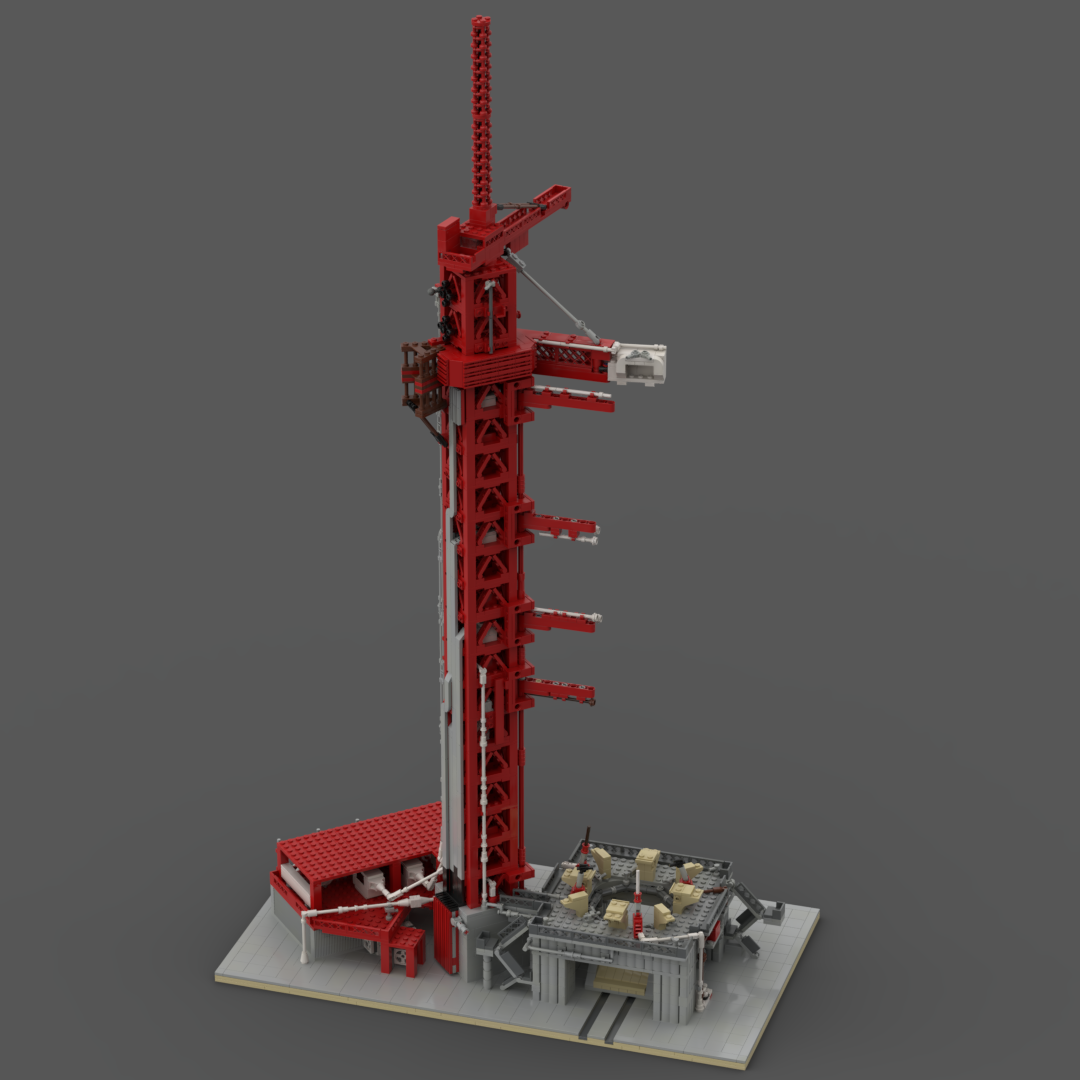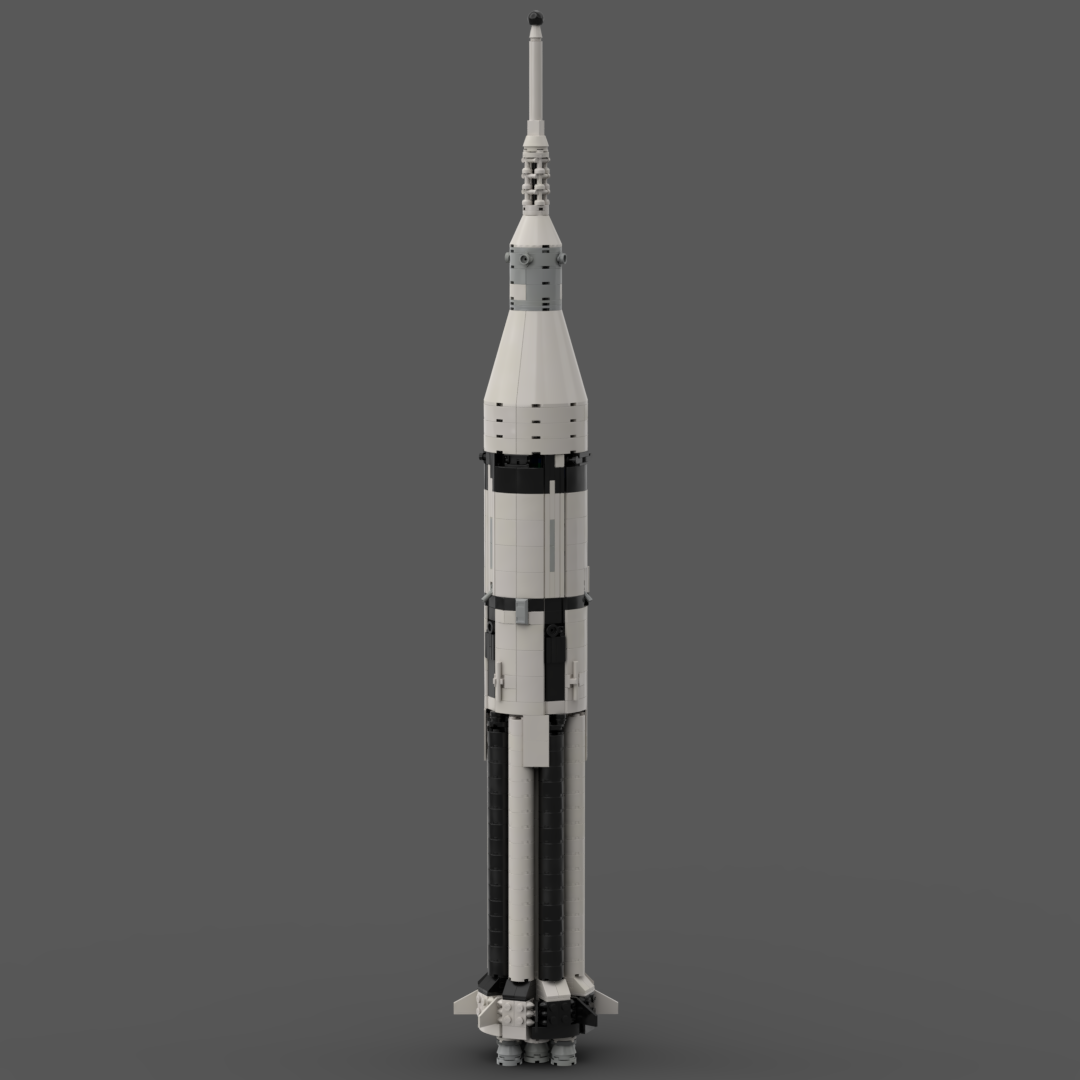
LEGO Designer:
David Welling (Luxordeathbed)
Nico Daams (Tech_niek)
Designed:
March 2020
Categories:
Launch Pads, All, Apollo Program, Space Agency - NASA
Launch Vehicle Details
Stages:
Length:
Diameter:
Mass at Launch:
Low Earth Orbit Capacity:
Total Thrust:
Apogee:
Class:
Launch Complex 34 (LC-34) is a launch site on Cape Canaveral, Florida. Launch Complex 34 and its companion Launch Complex 37 to the north were used by NASA from 1961 through 1968 to launch Saturn I and IB rockets as part of the Apollo program. It was the site of the Apollo 1 fire, which claimed the lives of astronauts Gus Grissom, Ed White, and Roger Chaffee on January 27, 1967.
Launch Complex 34 saw its first launch on October 27, 1961. The first Saturn I, Block I, mission SA-1, lofted a dummy upper stage on a suborbital trajectory into the Atlantic. The subsequent three Saturn I launches took place at Launch Complex 34, ending with SA-4 on March 28, 1963.
Launch Complex 34 was extensively modified to support Saturn IB launches, which began in February 1966. New anchor points were built to fasten the service structure in place during high winds. Access arms on the umbilical tower were rebuilt to match the larger rocket. At the 67-meter level, the swing arm was outfitted with a white room to permit access to the command module at the top of a rocket.
Two Saturn IBs (AS-201 and AS-202) were successfully launched from Launch Complex 34 before the Apollo 1 fire brought Apollo activities at the spaceport to an abrupt halt. After the fire, extinguishing equipment was installed at the top of the umbilical tower, and a slide wire was set up to provide astronauts a quick escape in the event of an emergency.
The first crewed Apollo launch—Apollo 7 on October 11, 1968—was the last time Launch Complex 34 was used. NASA considered reactivating both Launch Complex 34 and Launch Complex 37 for the Apollo Applications Program, but instead LC-39B was modified to launch Saturn IBs.
Launch Complex 37
Launch Complex 37 saw all the launches of the Saturn 1 Block 2 series. It had a slightly different construction, but this Launch Complex 34 model can be used for it. SA-203 and SA-204 were launched here as well.
Designers Notes
This version of the scale 1:110 Launch Complex 34 is a collaboration by Nico Daams and David Welling. The design is based on the original version by David Welling.
- This version covers the Base, Umbilical Tower, Launch platform, Environmental Control System (ECS) building, Plume deflector.
- Parts lists and instructions for the Apollo 7’s launch vehicle, Saturn 1B, by David Welling and the ARV and Astrovan by Eiffleman are not included in this build, but they really fit well to this build.
- The key improvements comparing to version 1 are:
- a bigger brick-built base plate, with tracks for the plume deflector
- more detailed piping, including the tail service masts
- added the Environmental Control System (ECS) building
- new electrical conduits on the side and on the inside the Umbilical Tower
- a suspension for the crew access arm, and more white room details
- the elevator now actually can travel both up and down
- the water deluge system is now fully connected
- added Launch platform electrical systems with visible wiring
- For the elevator you need a strong, thin wire of at least 150 cm I 59″. Use a white fishing line for strength, elasticity and aesthetics.
- Install the elevator wire around the pulley wheel in the top and the bars on both ends of the elevator rail, then tie a knot. The elevator is then connected to the front wire. You might need to detach one of the 1 x8 plates with rail to fit the wire suspended elevator between its tracks afterwards. See further instructions on page 112.
- Consider installing the crew access arm as late as possible as the arm likes to swing back and forth while handling the rest of the tower.
Finally, some tips for keeping part costs down:
- For each hidden part, the cheapest color was selected in Stud.io. Although this a good strategy for minimising part cost, it is not a guarantee as it depends on which parts you own in advance and where you purchase your missing ones. Feel free to substitute those hidden parts.
- When using Bricklink, while adding parts on a wanted list, you can select “Not applicable” as those part’s colour. This will allow you to let brick link decide the colour during the buying process for those specific parts, depending on your price maximum or availability at selected store(s).
Part count: 3396 bricks, 370 lots.
| Unit | width | length | height |
|---|---|---|---|
| Studs | 62.0 | 37.0 | 112.7 |
| Centimetres | 49.6 | 29.6 | 90.2 |
| Inches | 19.5 | 11.7 | 35.5 |
Downloads
This version of the scale 1:110 Launch Complex 34 is a collaboration by Nico Daams and David Welling. The design is based on the original version by David Welling.
This version covers the Base, Umbilical Tower, Launch platform, Environmental Control System (ECS) building, Plume deflector.
Parts lists and instructions for the Apollo 7’s launch vehicle, Saturn 1B, by David Welling and the ARV and Astrovan by Eiffleman are not included in this build, but they really fit well to this build.
The key improvements comparing to version 1 are:
- a bigger brick-built base plate, with tracks for the plume deflector
- more detailed piping, including the tail service masts
- added the Environmental Control System (ECS) building
- new electrical conduits on the side and on the inside the Umbilical Tower
- a suspension for the crew access arm, and more white room details
- the elevator now actually can travel both up and down
- the water deluge system is now fully connected
- added Launch platform electrical systems with visible wiring
For the elevator you need a strong, thin wire of at least 150 cm / 59″. Use a white fishing line for strength, elasticity and aesthetics.
Install the elevator wire around the pulley wheel in the top and the bars on both ends of the elevator rail, then tie a knot. The elevator is then connected to the front wire. You might need to detach one of the 1 x8 plates with rail to fit the wire suspended elevator between its tracks afterwards. See further instructions on page 112.
Consider installing the crew access arm as late as possible as the arm likes to swing back and forth while handling the rest of the tower.
Finally, some tips for keeping part costs down:
For each hidden part, the cheapest color was selected in Stud.io. Although this a good strategy for minimising part cost, it is not a guarantee as it depends on which parts you own in advance and where you purchase your missing ones. Feel free to substitute those hidden parts.
When using Bricklink, while adding parts on a wanted list, you can select “Not applicable” as those part’s colour. This will allow you to let brick link decide the colour during the buying process for those specific parts, depending on your price maximum or availability at selected store(s).
Part count: 3396 bricks, 370 lots.
| Unit | width | length | height |
|---|---|---|---|
| Studs | 62.0 | 37.0 | 112.7 |
| Inches | 19.5 | 11.7 | 35.5 |
| Centimetres | 49.6 | 29.6 | 90.2 |
No external URL provided.
Launch History information from space.skyrocket.de
Launch History information from space.skyrocket.de


